We were meant to do the famous hike from Elm over the Segnespass to Flims (passing by the famous Martin’s Hole), one of the six stages of the Sardona World Heritage Trail.

Alas, we learnt our lesson that one must always check how much snow there might be – I’ve learnt the hard way now, not to do hikes above 2250m before July.
The World Heritage Sardona area covers roughly 300 square kilometres of unique and pristine mountain landscape, in the border regions of the cantons St. Gallen, Glarus and Graubünden.

Thrusts, folds, faults – Nowhere else in the world are these witnesses of mountain building so monumental and clearly visible as in the World Heritage Sardona. For this reason, geoscientists worldwide have flocked to this area for more than 200 years and the region became part of UNESCO World Heritage in 2008. The results of their studies have revolutionized the understanding of mountain building.
I can certainly imagine geologists worldwide would have this hike at the top of their bucket list as having such an impressive view of the mechanisms and processes that lead to the formation of mountain landscapes from a hiking trail is seemingly a rare opportunity.
The Via GeoAlpina, part of the famous hiking trail network across the entirety of the Alps, also passes here through Elm.
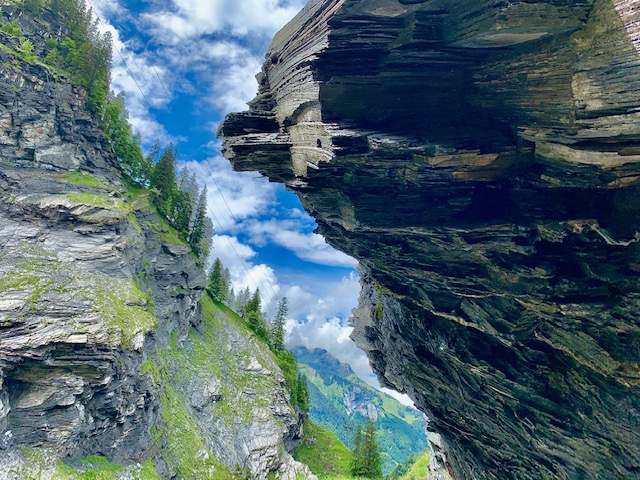
Statistics – Elm to Flims, a part of the Sardona World Heritage Trail:
Highest Point: 2627m (we only made it up to 2250m where the trail was the heavily snowed in)
Lowest Point: 1090m
Distance: 16.5km (if you start as we did at Tschinglenalp using the cable car. From Elm, it would be 21km and around 9 hours)
Duration: 6+ hours
Ascent: 1190m
Descent: 1616m
Getting there:
From Zürich, take the train to Ziegelbrücke, change trains to Schwänden, then take a bus to Elm Station. From that bus stop, it is a 1.6km walk to the Tschinglenalp cable car station.
In total, it took 3.5 hours from Basel SBB to get to the top of the Tschinglenalp cable car station which was where our hike started.
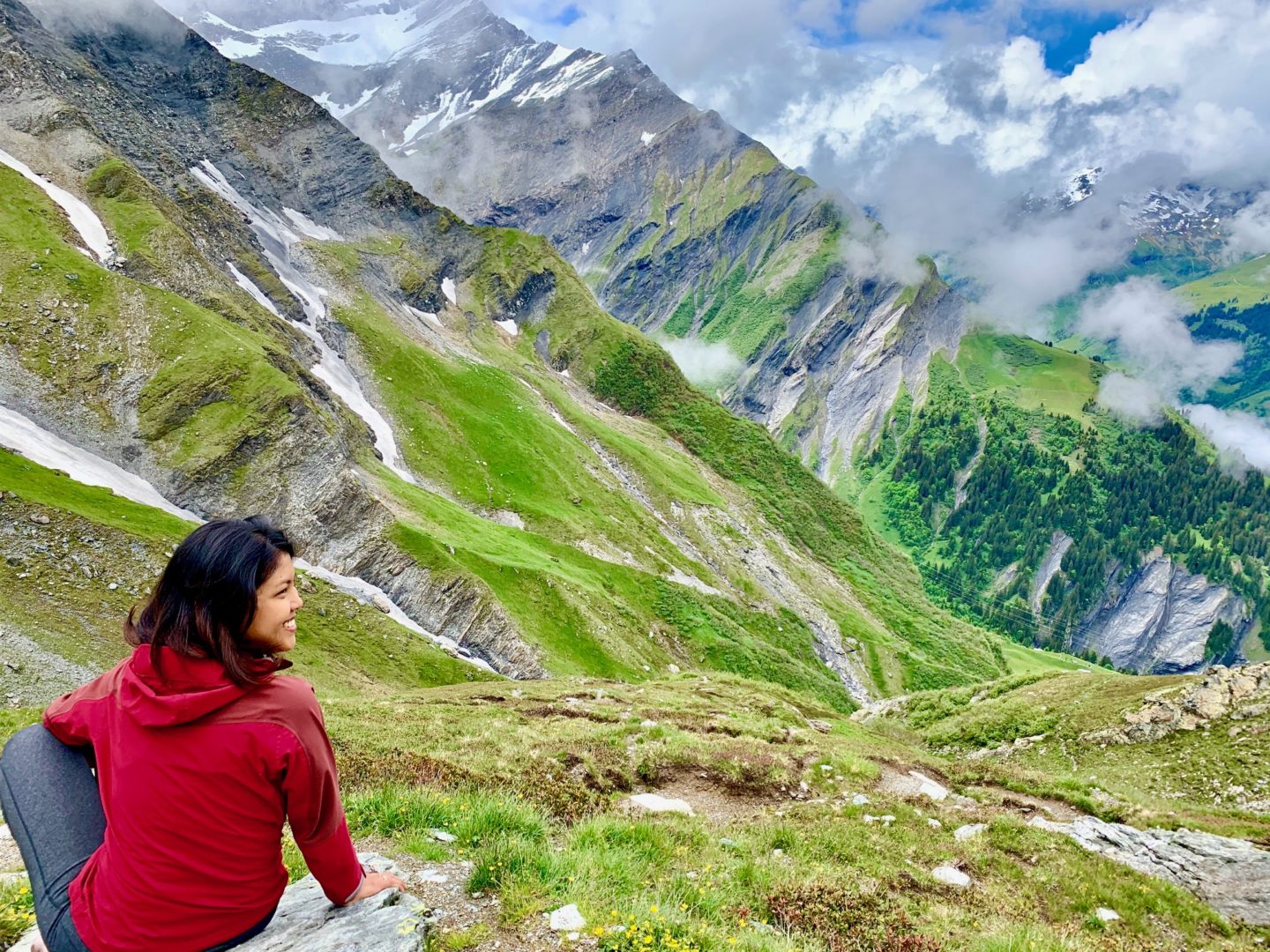
The Hike Up:
We paid CHF 12 one way to head up on the Tschingelnalp cable car which only went once per hour (this early on in the season in June).
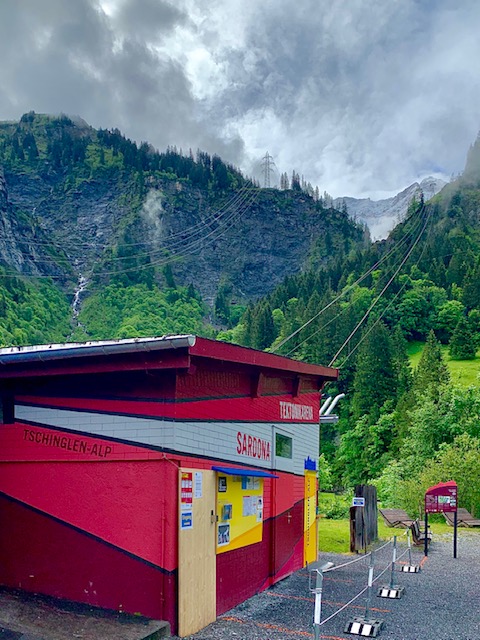
The view of the gorge was incredibly beautiful from here.
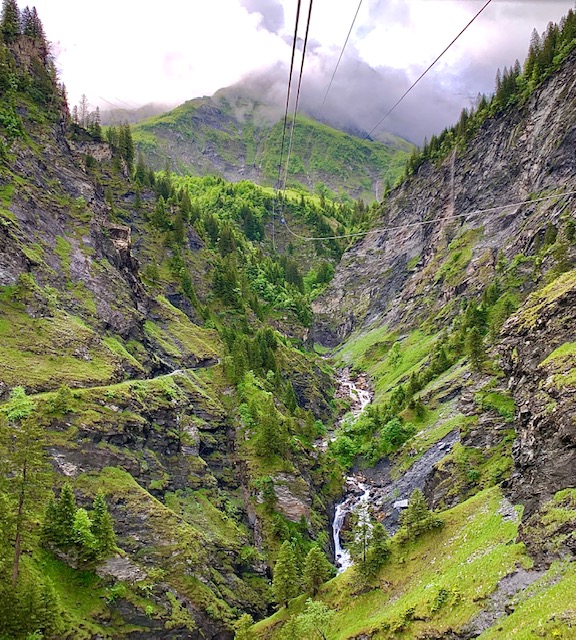
Getting off the cable car, we started our hike and very quickly realized we were in sheep country.
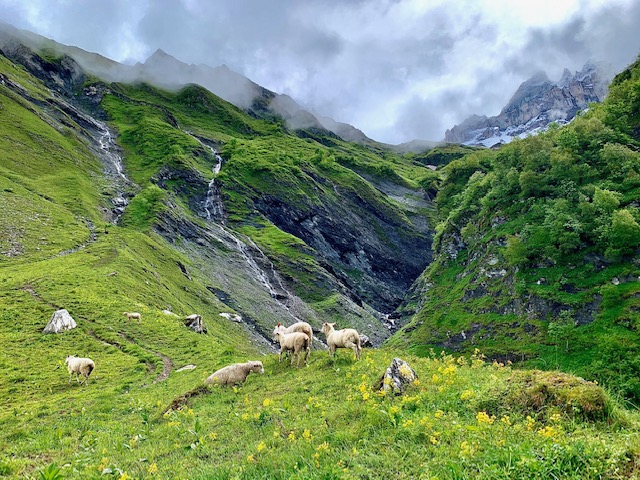
I was reminded of the Pizol 5 Lakes Hike due to the amount of sheep poop we encountered.
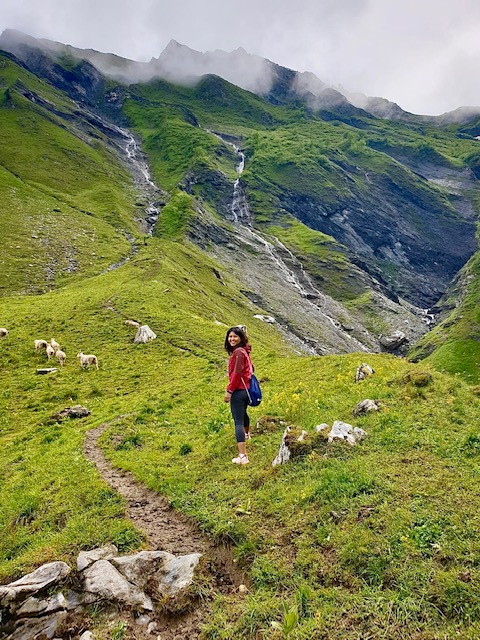
However as it had rained the last few days, this was much worse – mud and sheep poop.
Add to that, the steepness.
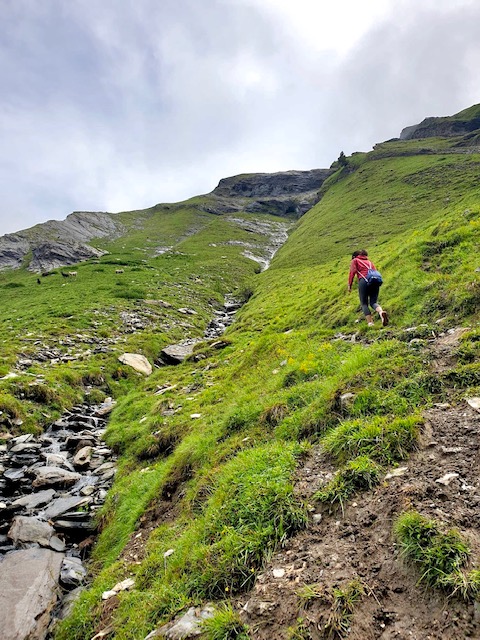
I had to use my hands for balance and it was only a matter of time that it landed into fresh sheep poop.
And then, came the waterfalls.
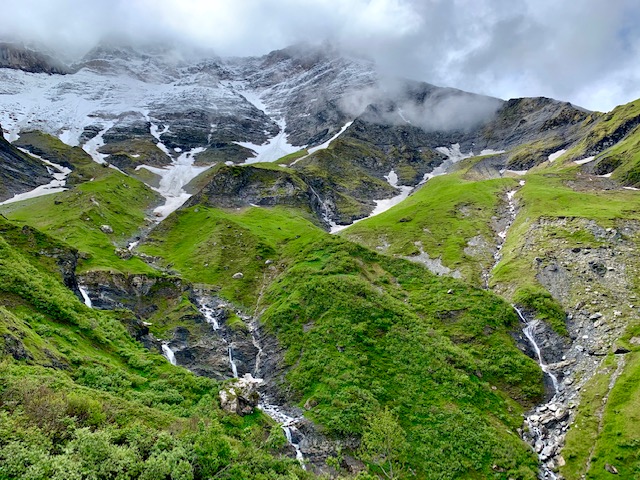
We couldn’t believe this alpine trail required so many waterfall crossings.
There were six of them on the way up. I would have never survived this hike on my own.
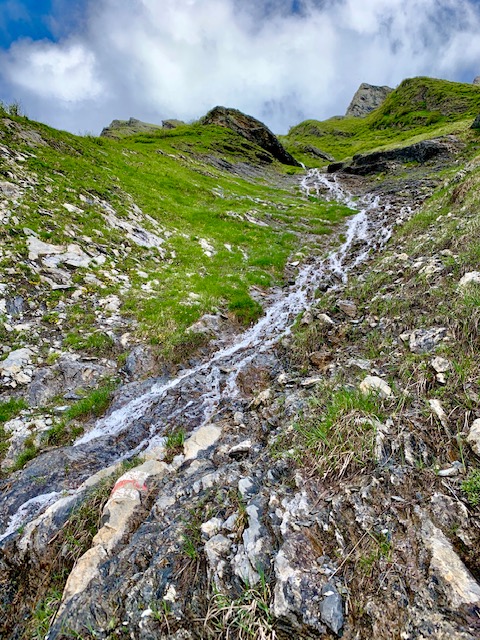
It really required a lot of guts crossing those waterfalls.
Can you spot the white-red-white mark showing the path of the trail in the pictures above and below?
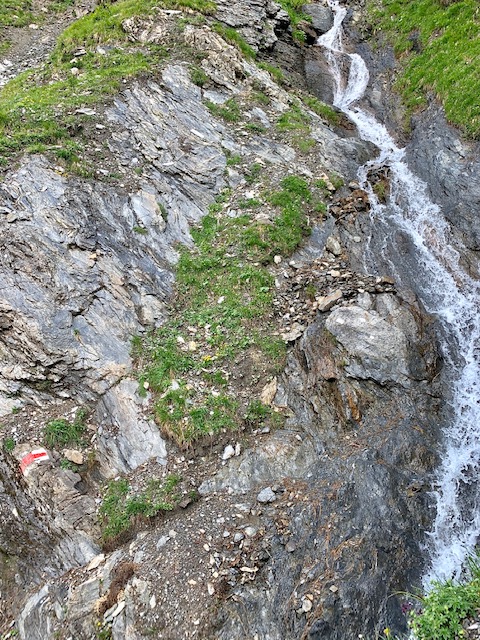
I had also been going hiking with my normal running shoes as my hiking shoes recently gave me blisters. Wrong move.
My feet were wet from early on as the grass was wet from the previous days’ rains.
Stepping into the waterfalls just meant that my feet were wet and cold for far too long. We started our hike at 10.30am and I only managed to take my socks and shoes off when I got home after 7 pm.
Reminder to self to bring extra socks and flip flops to change into at the end of the hike next time.
We also had to hike up mini waterfalls. Look closely to see the water trickling down the rocks in the picture below.
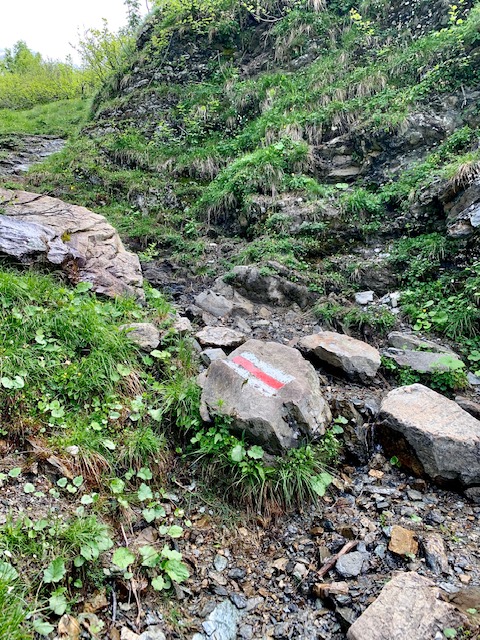
One of the highlights of our trip was seeing a chamois. That was just brilliant.
We felt sure we were heading into snow territory and wondered how much further we could continue on without proper gear.
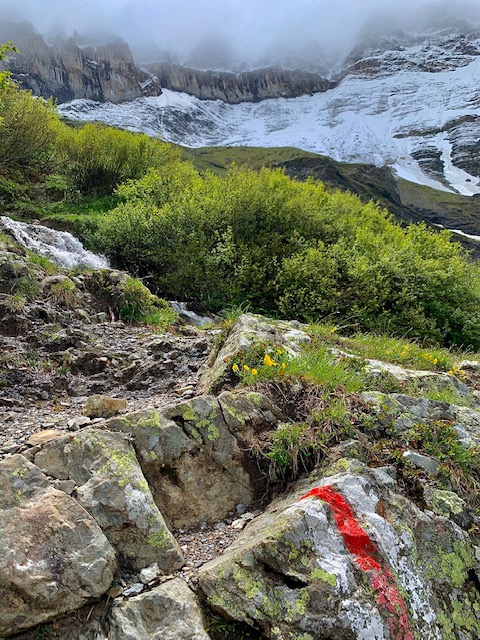
Soon we found ourselves at the height of the snowcapped mountains in the distance.
We soldiered on. We kept looking for the white-red-white paint showing the path of our hike as we climbed up the mountain.
Turning back, the views were just breathtaking.
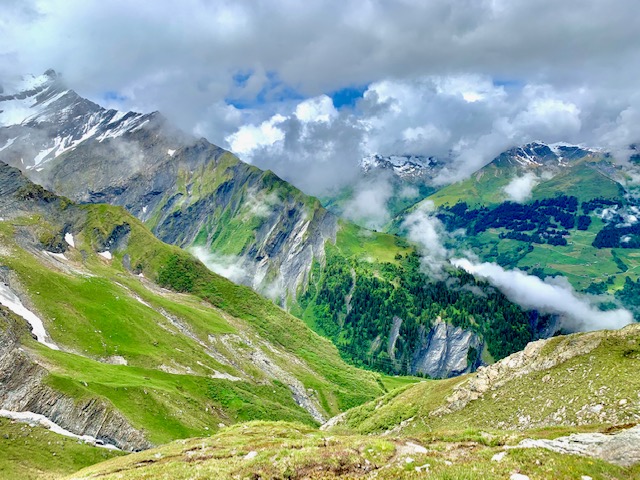
It started to rain. We weren’t sure if it was time to head back. We tried heading a little more upwards.
Then came the patches of snow on the grass.
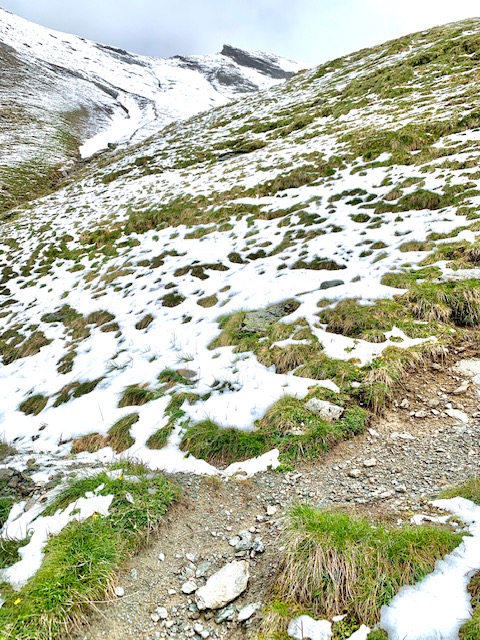
Soon, we were snowed in.

We knew we had to call it quits. I couldn’t go any further than in the picture below.

The Hike Down:
It was painful trying to go down the same way we went up. Our knees and thighs could really feel the steepness of the trail.
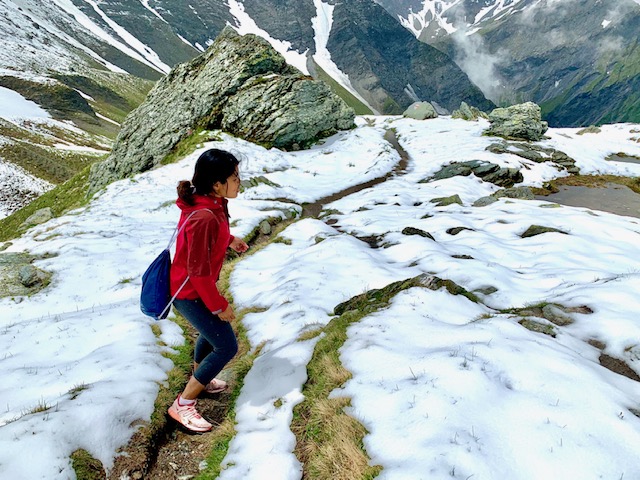
Crossing the same six waterfalls we had encountered during our ascend, felt like a whole other experience.
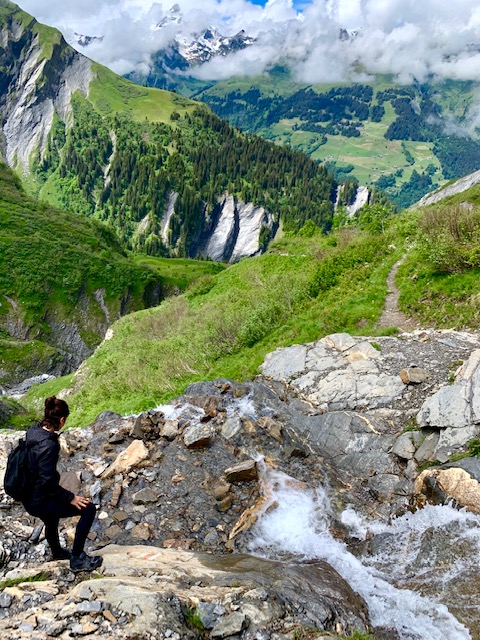
It was really challenging going down the rocky parts which were wet and slippery.
It was not easy finding a grip on those rocks.
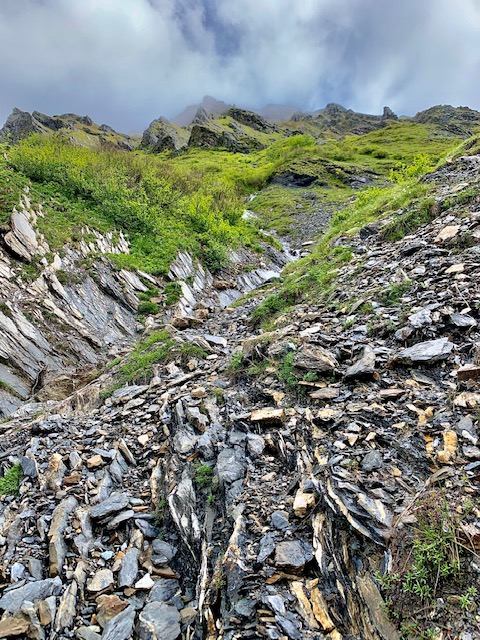
The worst part was once again going through the mud and sheep poop – and that steepness, in the rain. At least, the views were stunning.
Can you spot the many sheep in the picture below? They look more like white and brown dots.
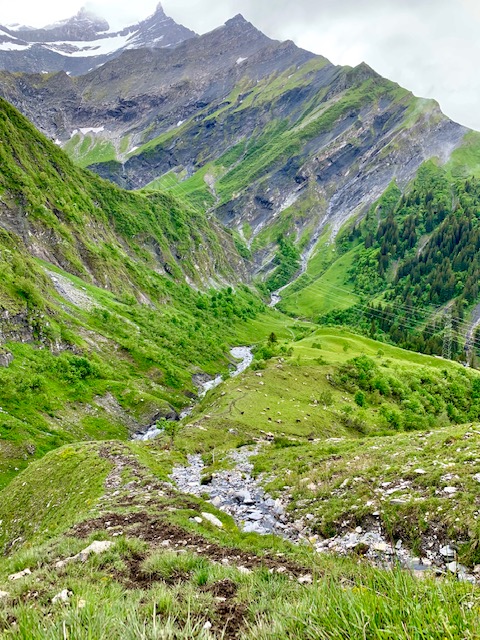
Back into sheep country, I tried taking a picture of this one and was sure it was going to attack me.
Having just watched Bear Grills on You VS Wild, I tried using my voice to stop it from coming towards me.
It failed majorly and I ran off.

The hike down to Elm from the top of the TschinglenAlp cable car stop was via the Schluchtenweg (The Gorge Trail).
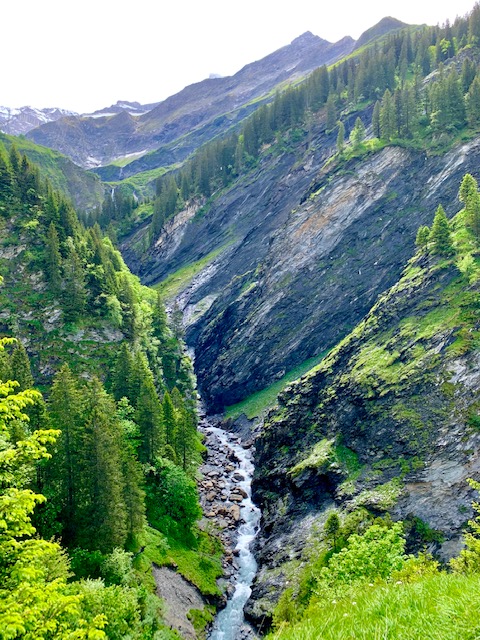
Walking in the gorge, close to rocks that are 35 to 50 million years old, which were once the bottom of the sea, was truly an unforgettable experience.
We encountered layered sandstone and slate belonging to Flysch-rock types along the entire Schluchtenweg.

We also had to cross another ten waterfalls at this stage.
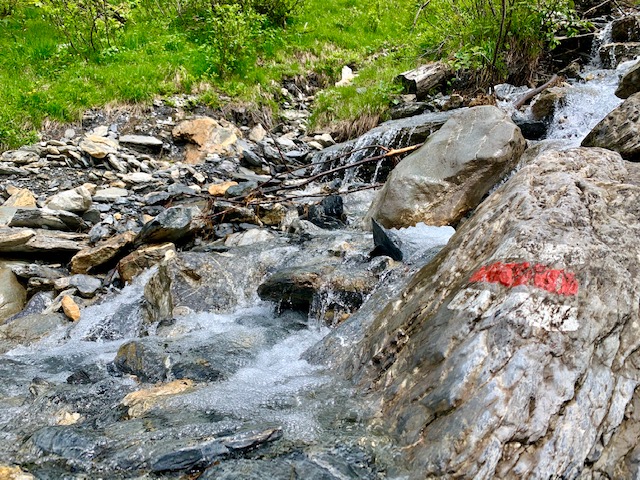
One was particularly scary looking with chains on the side (you can see it if you look very closely in the picture below). We had to walk alongside the waterfall.

.
.
.
The Sardona World Heritage Trail – My Impressions
I did not feel that this was a particularly difficult hike.
However, the conditions of the elements did make it undoubtedly challenging.
Tips:
Do not do this hike before July due to the snow.
Make sure the weather has been dry a few days before your hike (particularly due to the many waterfalls)
There are hikes where you can go solo and I would certainly say that this is NOT one of them.
Have you done this hike? Would you like to? I would love to hear your thoughts in the comments below.
For other inspiration on hikes or places to visit in Switzerland, click here.
